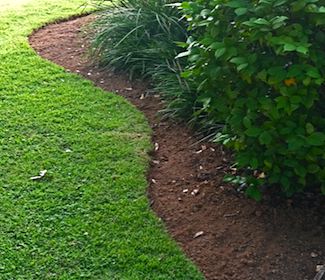Spring Lawn Care

Spring has sprung! The snow is gone, the birds are singing, and before you know it, your grass is going to start growing. Spring is the perfect time to give your lawn some TLC, in order to ensure a healthy lawn throughout the entire growing season.
Rake, Rake, Rake
The first thing to do to your lawn in the spring is give it a good raking. Raking takes care of any leaves leftover from fall, but more importantly it works to remove thatch (and get your heart pumping as well). Thatch build-up of more than half an inch is too much.
Raking is the best way to get rid of snow mold, a turf condition left behind after the snow melts.
Raking also breaks up clumps of grass that may be stuck together by a fungus called snow mold. New grass shoots have trouble getting through both thick thatch and patches matted by snow mold; a good deep raking eliminates both problems.
Check for Compaction
If your lawn gets lots of traffic, it can suffer from compaction, and slowly decline in health. Moss is a good sign of compacted soil. Lawn aeration is the solution to compaction. By pulling out cores of soil, aerating allows for water, oxygen, and sunlight to penetrate into the ground where the roots are, encouraging healthy growth. Aerators can be rented from rental centers or hardware stores. Going in on a rental with neighbors is a great way to keep costs down. Most lawn care services also offer aeration services. Be sure to check out Lawn Aeration for more details.
Liming
Moss can also be a sign that your lawn is too acidic. Grass thrives in a neutral pH. Having your soil tested by a county extension can identify your lawn's pH. Adding powdered lime (a natural stone product) will help adjust the pH. Too much can be bad, as a soil that is too alkaline causes issues as well. Apply only what is needed.
Overseeding
Lawns suffering from bare spots can benefit from overseeding. Applying new grass seed to your lawn with a slow-release nitrogen fertilizer will revitalize your lawn with thicker turf.
While overseeding can be done in spring, it more commonly is done in the fall so the new grass doesn't have to compete with crabgrass.
Fertilizing
Adding nutrients to your lawn in the spring really gets the turf off to a great start, and will help it better deal with the stresses of the hot summer months. Most commercial fertilizers contain toxic, petroleum-based fertilizers; applying natural fertilizers is a much healthier way to care for your lawn. Click here: Organic Lawn Fertilizer
Herbicide?
Spring is the time to add product to your lawn to control emergent weeds and crabgrass. If you choose to apply a herbicide or crabgrass preventer, now is the time to do it. Choose an organic form of pesticide to avoid harmful chemicals. Check out Organic Pest Control. You can also simply focus on building a healthy lawn naturally. A thick turf will naturally be more resistant to weed infiltration. Pulling weeds by hand is also a great form of exercise that some find to be an enjoyable task.
Lawn Mower Tune-Up
Spring is the time to give the lawn mower a tune-up. Gas-powered mowers are a huge source of air pollution, but keeping them in good working condition will minimize emissions. Change the oil, replace the spark plug and air filters, and use fresh gasoline, and you'll be good to go. A well-tuned mower will start easily and run hassle-free all season long. Don't forget to replace the blade or get it sharpened; dull blades damage grass by cutting the blades poorly, instead of a nice clean cut.
If you've got a reasonable small yard, you can mow it easily and pollution-free with a reel mower that doesn't have an engine. New designs are easy to push and do a remarkable job.
Depending on your outlook, lawn care can either be a rewarding activity or a chore; either way, taking the time to get your lawn more prepared for the growing season in the spring will make it as painless as possible, and keep your lawn thick, healthy, and green.
For more lawn care information, click here: Lawn Grass
comments powered by Disqus


































































